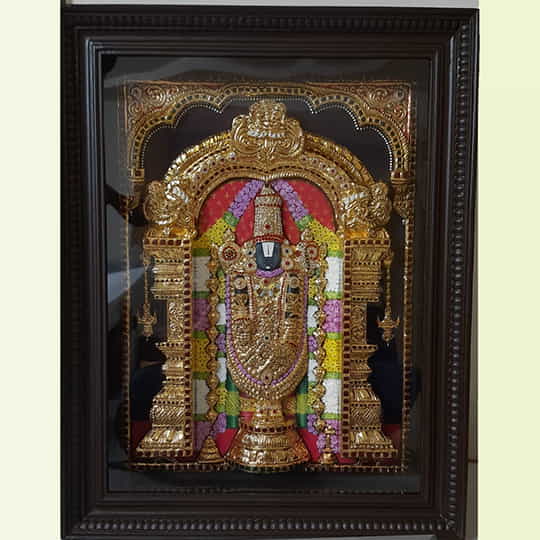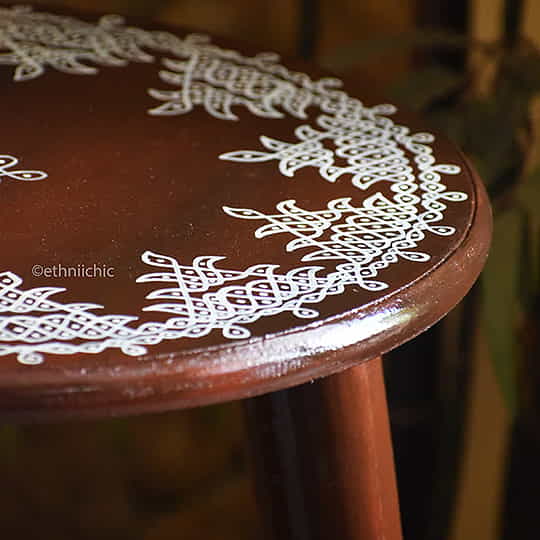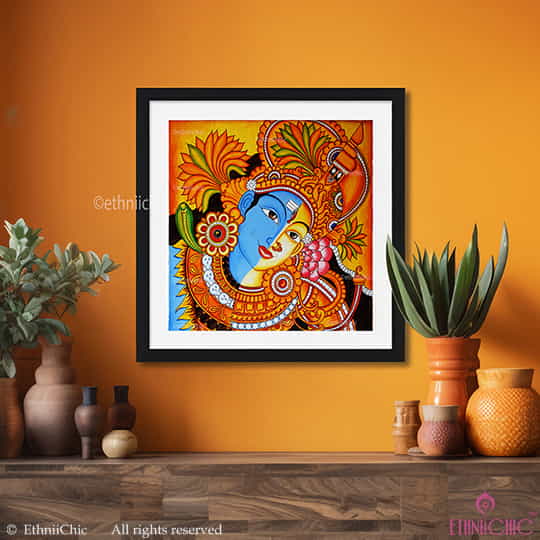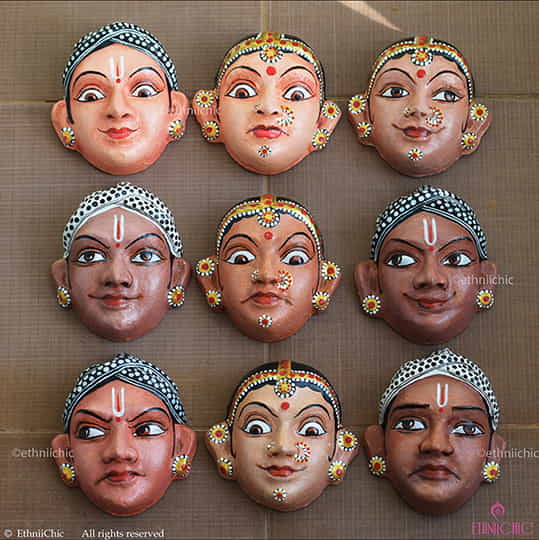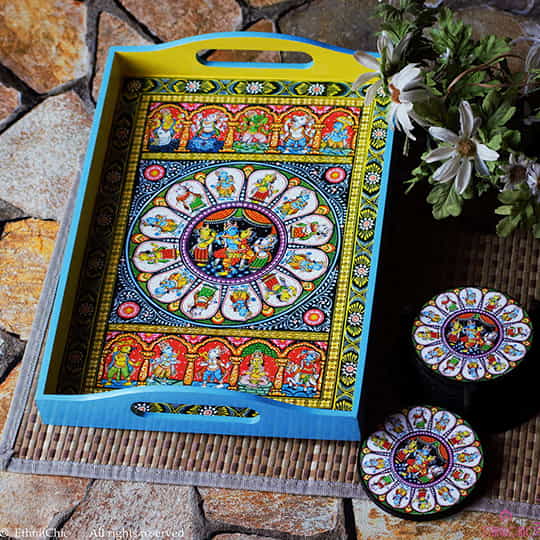As the golden sun cast its mellow glow over the ancient city of Thanjavur, young Ananya traced her fingers over the intricate strokes of an old painting that adorned her grandmother’s prayer room. The painting, rich with gold foil, depicted a resplendent deity, its presence exuding a divine aura. “Is this a Tanjore painting, Ajji?” she asked, her eyes brimming with curiosity.
Her grandmother, Kamala, nodded with a smile. “Yes, my dear. But do you know how it differs from a Mysore painting?”
Ananya frowned. She had heard of both but never really thought about what set them apart. “They look similar, don’t they? Both have gods, gold work, and vibrant colors.”
Kamala chuckled. “Yes, at first glance, they might seem alike. But if you look closely, you’ll see how different they truly are. Let me take you back in time, to where these two magnificent art forms began.”
The Shared Legacy: Similarities Between Tanjore and Mysore Paintings
Before diving into their differences, Kamala explained how both Tanjore and Mysore paintings emerged from the patronage of South Indian royalty. Both styles predominantly depict Hindu deities and mythological themes, adorned with gold foil, precious stones, and rich colors. The use of wood, cloth, or board as the base, along with embellishments, further adds to their grandeur. But while they share these fundamental traits, their artistic execution, technique, and overall aesthetics vary significantly.
The Birth of Tanjore Painting: A Divine Glow of Gold
“Tanjore painting, or Thanjavur painting, finds its origins in the 16th century under the patronage of the Nayak and later the Maratha rulers of Thanjavur,” Kamala began. “The rulers encouraged a blend of local styles with influences from Vijayanagar art, leading to the creation of an opulent and striking style.”
Ananya’s eyes gleamed as she took in the elaborate details. “So, what makes it special?” she asked.
“Tanjore paintings are known for their grand and ornate appearance,” Kamala explained. “Artists use a wooden plank as the base and prepare it with a mixture of chalk powder and tamarind seed paste. Once the drawing is made, gold foil is applied, along with embedded semi-precious stones to enhance the visual splendor. The figures are often large, with round faces, almond-shaped eyes, and a divine presence that immediately captures the onlooker’s attention.”
Ananya gently touched the painting’s surface, feeling the raised textures of gold and embellishments. “It looks almost three-dimensional!”
“Exactly! That’s because of the embossed effect created by the gold work. And notice the limited color palette – predominantly red, blue, and green, giving the artwork a regal yet divine touch.”
Mysore Painting: The Grace of Detailed Elegance
Kamala then guided Ananya to another painting hanging in the hallway, one that seemed more refined and intricate. “Now, let’s talk about Mysore painting. This art form flourished under the Wodeyar kings of Mysore during the 17th and 18th centuries. It developed under the influence of Vijayanagar and later Mughal art.”
Ananya compared the two paintings side by side. “This one seems softer, more delicate.”
Kamala nodded. “Mysore paintings are known for their elegance and intricate detailing. Unlike Tanjore paintings, which have bold and heavy embellishments, Mysore paintings focus more on delicate brushwork and shading techniques.”
She pointed at the artwork. “Notice how the figures here are more proportionate, with expressive faces and fluid body movements. The gold work, though present, is much more subtle and blends seamlessly into the painting rather than standing out.”
Ananya tilted her head. “And the background?”
“Ah! That’s another key difference. While Tanjore paintings often have solid, brightly colored backgrounds, Mysore paintings have more detailed and intricate backgrounds with floral and architectural elements. The artists use multiple layers of soft color washes, giving the artwork a more nuanced and realistic feel.”
How to Distinguish Between the Two?
Kamala smiled as she saw Ananya’s curiosity grow. “Now, let me give you a few tips to easily recognize them.”
- Gold Work & Embellishments: Tanjore paintings have thick gold foil that is embossed, creating a three-dimensional effect. Mysore paintings also use gold but in a more refined and understated manner.
- Figures & Expression: Tanjore paintings have bold, round-faced, and large-eyed deities, whereas Mysore paintings depict more proportionate and graceful figures with intricate detailing.
- Background & Detailing: Tanjore backgrounds are usually simple and filled with a single, bright color, whereas Mysore backgrounds are elaborate, featuring nature-inspired motifs and ornamental patterns.
- Artistic Execution: Tanjore paintings have a dense and opulent look with prominent decorative elements, while Mysore paintings maintain a delicate, sophisticated style with detailed brushwork.
A Legacy That Lives On
As the evening set in, Ananya sat in awe, absorbing all that she had learned. “Both are so beautiful in their own way. It’s amazing how art can reflect history, culture, and devotion!”
Kamala nodded proudly. “Indeed. Tanjore paintings, with their grandeur, bring an immediate sense of divine presence, while Mysore paintings captivate with their finesse and grace. Both continue to be treasured forms of art, keeping centuries of tradition alive.”
Ananya smiled as she traced the golden hues of the paintings once more. “Ajji, one day, I want to learn both styles and create my own masterpiece.”
Kamala chuckled and patted her granddaughter’s head. “Then, my dear, you shall carry forward the golden heritage of our ancestors.”
And as the night embraced them, the stories of Tanjore and Mysore paintings whispered through the walls, immortalizing the legacy of South India’s artistic brilliance.


